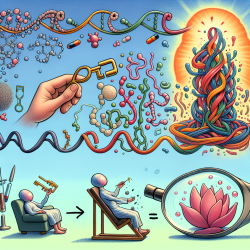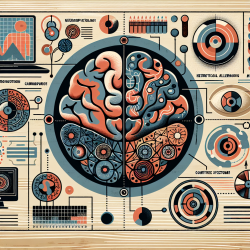Introduction
Recent research on the Activity-Dependent Neuroprotective Protein (ADNP) has unveiled its potential role in addressing various human muscle disorders. The study, titled Single Cell ADNP Predictive of Human Muscle Disorders: Mouse Knockdown Results in Muscle Wasting, provides insights into how ADNP could be a game-changer in the diagnosis and treatment of muscle diseases. As a practitioner, understanding these findings could significantly enhance your approach to therapy and patient care.
Understanding ADNP's Role
ADNP is a crucial protein involved in brain formation and has now been linked to muscle development and function. The study identifies ADNP as a major constituent of developing human muscle, with its transcript concentrations predicting multiple muscle diseases. This correlation is particularly significant as it opens new avenues for personalized diagnosis and therapeutic strategies.
Key Findings
- ADNP transcript levels are predictive of several muscle disorders, including Duchenne muscular dystrophy and Pompe disease.
- Mouse models with ADNP deficiency exhibited muscle microtubule reduction and motor dysfunctions, which were ameliorated by treatment with the ADNP fragment NAP.
- CRISPR-mediated knockdown of ADNP in adult mouse muscle resulted in motor deficiencies, highlighting the protein's role in muscle maintenance and function.
Implications for Therapy
The potential of ADNP as a biomarker for muscle disorders is immense. Practitioners can consider incorporating ADNP level assessments in diagnostic protocols to better predict and manage muscle-related conditions. Furthermore, the study suggests that NAP, an ADNP fragment, could serve as a therapeutic agent, offering hope for conditions previously deemed untreatable.
Encouraging Further Research
While the findings are promising, they also underscore the need for further research. Practitioners are encouraged to explore the broader implications of ADNP in muscle health and disease. Collaborative efforts in research could lead to breakthroughs in understanding and treating muscle disorders more effectively.
Conclusion
ADNP's role in muscle development and disease presents a new frontier in medical research and therapy. By integrating these insights into clinical practice, practitioners can enhance patient outcomes and contribute to the evolving landscape of muscle disorder treatment.
To read the original research paper, please follow this link: Single Cell ADNP Predictive of Human Muscle Disorders: Mouse Knockdown Results in Muscle Wasting.










